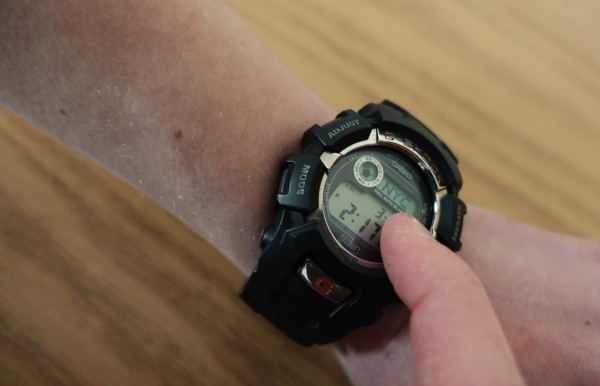Tell Tale Tech: Perfect Timing
March 4, 2015
The watch is making a comeback of sorts. And as you might have guessed, Apple and Google have their hands in it. There are a few newcomers this time though, like Pebble and Withings, which are quickly becoming contenders in this emerging industry.
Essentially, a smartwatch is a watch-like device that allows you to use the features of your smartphone without pulling it out of your pocket. Because apparently, this has become too much of a burden. If we had just stuck to reasonable phone sizes, this wouldn’t have been a problem. But big phones and their horrible counterparts known as “phablets” are here to stay. Maybe this was all part of a plan to create the market for smartwatches. I suppose we’ll never know, but I’m definitely suspicious.
Pebble started the whole revolution with a Kickstarter campaign back in 2013, and have since launched two successful models, the original Pebble and the Pebble Steel. They now have an updated version aptly called the Pebble Time, which features a brand new operating system (OS) built from the ground up. Using this new OS allows them to focus primarily on design and usability, instead of on maintaining compatibility with existing ecosystems, which clearly shows in this latest iteration. Thankfully, they have also stuck with their trademark hardware buttons instead of implementing a touch screen.
Apple’s Watch is going to officially launch soon and as such, the entire industry seems to be on hold waiting for the release. Apple has already given a preview of the impressive hardware, but the OS, which will utilize a dial on the side of the watch, still looks a bit awkward to use. Apple is fairly competent at interface design though, so I’m sure they are more than capable at making this work.
Android watches rely almost exclusively on touchscreens. And while this solves the interface problem, it brings with it an entirely new set of issues. For one, the screen is tiny, and often too small to be useful as a touchscreen. Making the screen larger won’t help either, because then the device loses its identity as a watch altogether. On top of all that, touch screens get dirty and can kill battery life pretty quickly. Additionally, Android Wear, the OS featured on these devices, is still in its early stages. And while it has improved dramatically since its launch, it is still not fluid enough to work as a full time watch.
The biggest shortcoming of current smartwatches though, are their battery lives. Most are pitifully short. And this includes with all their power saving techniques, like having the display only appear when needed. Different companies have come up with a whole host of unique ways of activating the screen, but in my opinion they are all kind of useless. A watch of any kind needs to be on all the time. That’s kind of the whole point. Unlocking a smartwatch is really no more convenient than unlocking a smartphone.
While the current Android watches last maybe a day a half if you are lucky, other companies have really taken this problem seriously and come up with some fairly great results. Pebble’s Time for example, promises a week long battery life before it needs to be recharged. And Withings’ recently announced Activité? It only needs to be replaced every 8 months.
If companies really want to capture the essence and simplicity of a watch, they have to create a device that is as understated as possible. This does not however mean that a smartwatch cannot be beautifully designed. Simplicity in form and function can go a long way. Basically what I’m getting at is that a smartwatch has to feel and work like a watch. Revolutionary, right?













